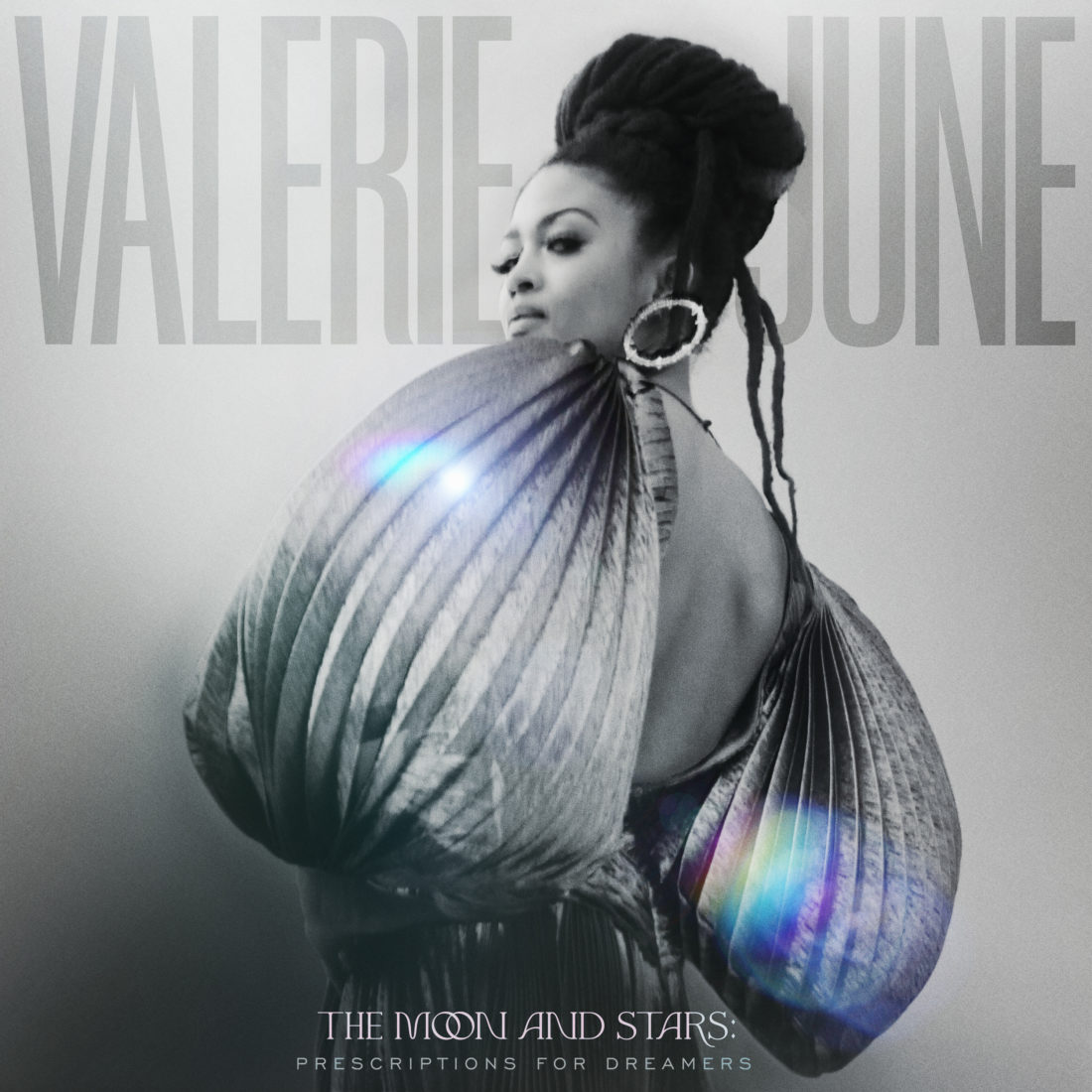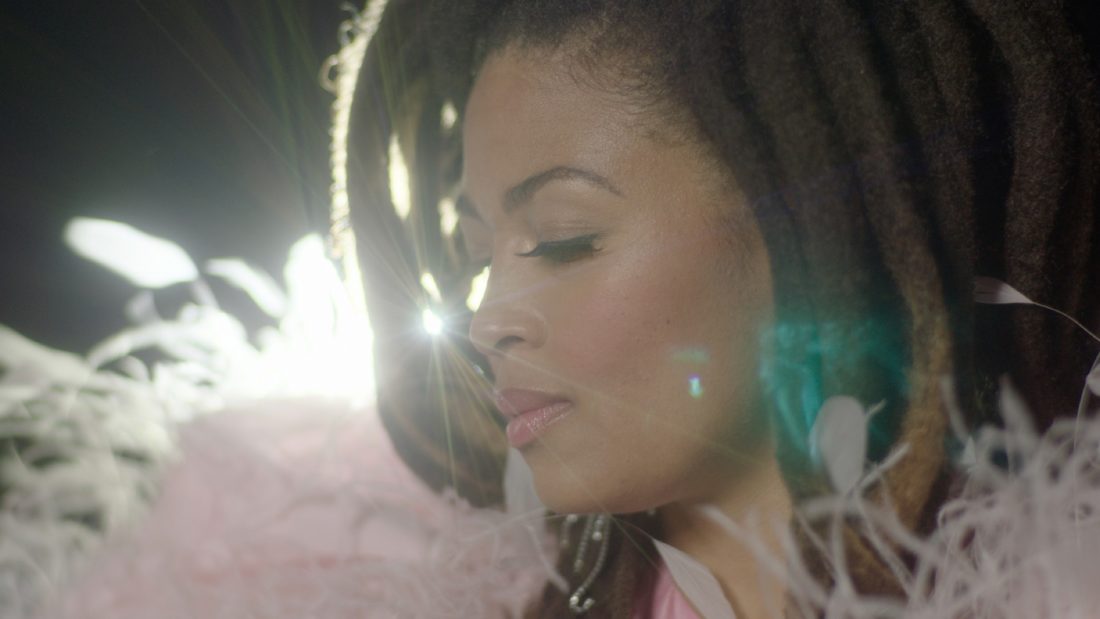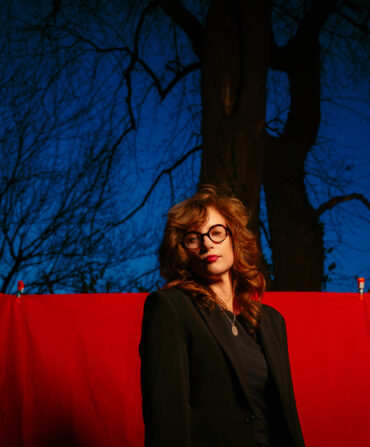In 2017 Valerie June’s sophomore effort—the critically acclaimed The Order of Time—put listeners in a rocket ship and took them to the astral plane. June’s kaleidoscopic introspection continues with the release of the Tennessee-born musician’s latest album, The Moon and Stars: Prescriptions for Dreamers.

Difficult to categorize but instantly recognizable, June’s voice is like raw silk—intimate, elegant, and strong, and the lyrics she sings are at turns grounding and ethereal. On some tracks, her voice quavers barely above a whisper. In other moments, like on the ballad “Call Me A Fool,” June is a supersonic powerhouse, her sound comprised of shimmering bluegrass, soul, and stardust.
As we mark the anniversary of when the COVID-19 lockdown began, June’s album comes at just the right time for those in need of a bit of peace after an anxiety-inducing year. Her ability to harness the power of stillness and delight in daily observations through her musical meditations cause the past and present to collapse into each other to create a cosmic, spiritual experience.
We caught up with the singer, songwriter, and multi-instrumentalist to talk The Moon and Stars: Prescriptions for Dreamers, which comes out March 12.
You grew up in Humboldt, Tennessee, which is wedged between two major music cities—Memphis and Nashville. What made you choose to go to Memphis in 2000?
It’s a simple answer—I followed my heart. I was in love and I followed him there. I wasn’t used to being in a city. Memphis is a pretty violent town, and I was used to going to bed listening to crickets, frogs, and cicadas. So, hearing all those sirens, it was a game changer. When I moved to New York, even more so.
Moving to Manhattan, which you did in 2011, was a major change, but you’ve always managed to keep your connections to nature. You still have your home in Tennessee. Are there other things that help you stay grounded?
I learned that I couldn’t live next door to a fire station. I was like, “I gotta get the hell out of here.” I needed trees. Trees, I think, are one of the smartest and wisest things on the planet. They know so much more than us. Sometimes I like to do like Howard Thurman, the theologian, says and I go and sit under a tree and talk to it. They’ve seen more than any of us humans will ever see. Every once in a while, I get a reply, but communing with nature is constant for me. I need it. I keep flowers all around now. I keep fresh flowers all around the house. I’ve got to have the connection with nature.
I know this year was incredibly unusual for you—you’re usually on the road, touring about two hundred days out of the year, and you split the rest of your time between your home in Tennessee and New York. Is there anything specific that you miss when you’re out on the road or away from the South?
I go back to Tennessee so often that I don’t miss much—but I’ve been touring for the last ten years. If I miss anything, it’s the voices. Last week, I had a phone call, and the lady who answered the phone had such a Southern accent. As I got off the phone, she said, “You’re not from New York, are you?” I was like, “No, ma’am. I’m not.” She was like, “You’re like me. I can’t tell you how happy I am to hear your voice and your accent.” I always miss that.
At the beginning of the pandemic, you were doing these intentional meditations on Instagram. Sometimes I would log on and I would see you on the front porch of your place in Tennessee, holding a magnolia bloom and saying affirmations. You were a grounding presence for many people during an anxious, scary time. Are the meditations something that you’ve practiced for a long time?
I’ve practiced for decades and during the pandemic, I wanted to share that side of myself with the world because I felt like it could help people. I was inspired by a program called Grounded that works to help reduce gun violence in the lives of people like Memphis teenagers. We worked with the students, using art to keep their energy levels up and keep them inspired. We also taught them mindfulness practices. One of the other artists, a Buddhist nun named Sister Peace, would lead us in meditations. Occasionally, she would turn to another person to lead the meditation. I started to feel more comfortable sharing my practice with the world, because I was inspired by the way Sister Peace was sharing her practice with us.
These core principles show up on The Moon and Stars: Prescriptions for Dreamers.
I’ve always lived in this kind of space in my mind, but knowing how to articulate it through art and share it with people is new. It took finding the right people, like producer Jack Splash, to help me express my mindset through music. He understood what I meant when I said, “I want it to be very light, iridescent almost, like constellations.” I wanted to do this work because I wanted to remind everybody that yeah, we are stardust. The idea that you can plant a seed in the ground and know you’re going to get that watermelon if you nurture it, that’s an earthly experience but it’s also a wonder that we can do things like that. It’s magical to me. Our existence here is magical, even though it goes by so fast. I love nature and I love plants. I love watching how they move towards the light, and I think that that is a reminder for us to move towards our inner light. They teach us so much about what it means to be in a physical body and have this experience.
You once described your music as a plant—deeply rooted in soil, but every leaf is a different genre that’s still bound together. Your music also makes space for joy. What puts a smile on your face now?
Right now, I get a lot of joy out of clothes and fashion. I love color. I love the feeling of cloth and textures. So, anything with art, with creativity—it can be poetry, illustrating. That’s bringing me joy. I love stories and I love songs that tell stories. I’ve always been fascinated by paper, pencils, and writing. I’ve created over two hundred illustrations. Some of those will be in my book that comes out later this year. Maps for the Modern World (out April 6) is filled with art, poems, and insights that I found to be helpful when I was working to become more loving, kind, and mindful. That’s a whole different set of writing that I never thought I would do, but there I am doing it.








